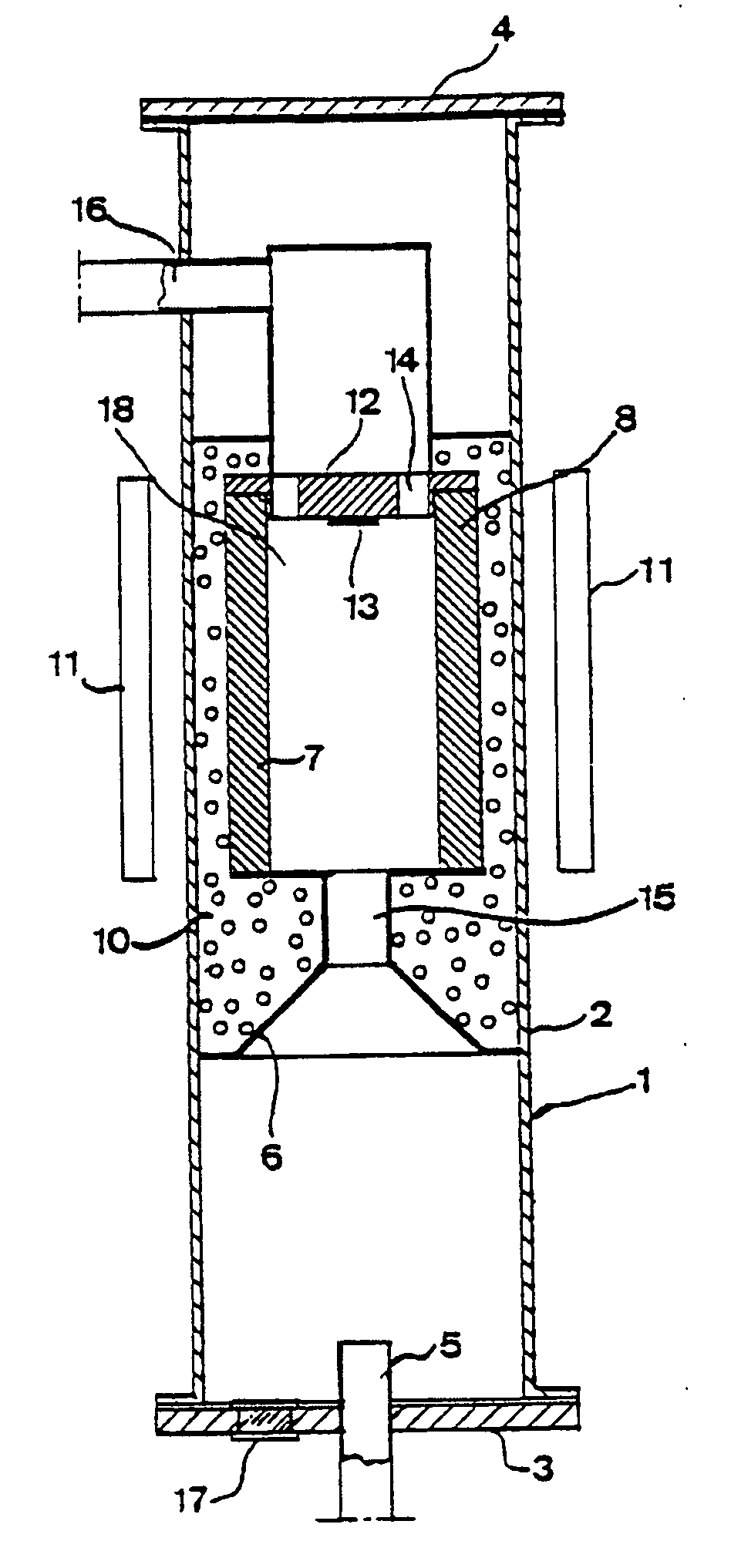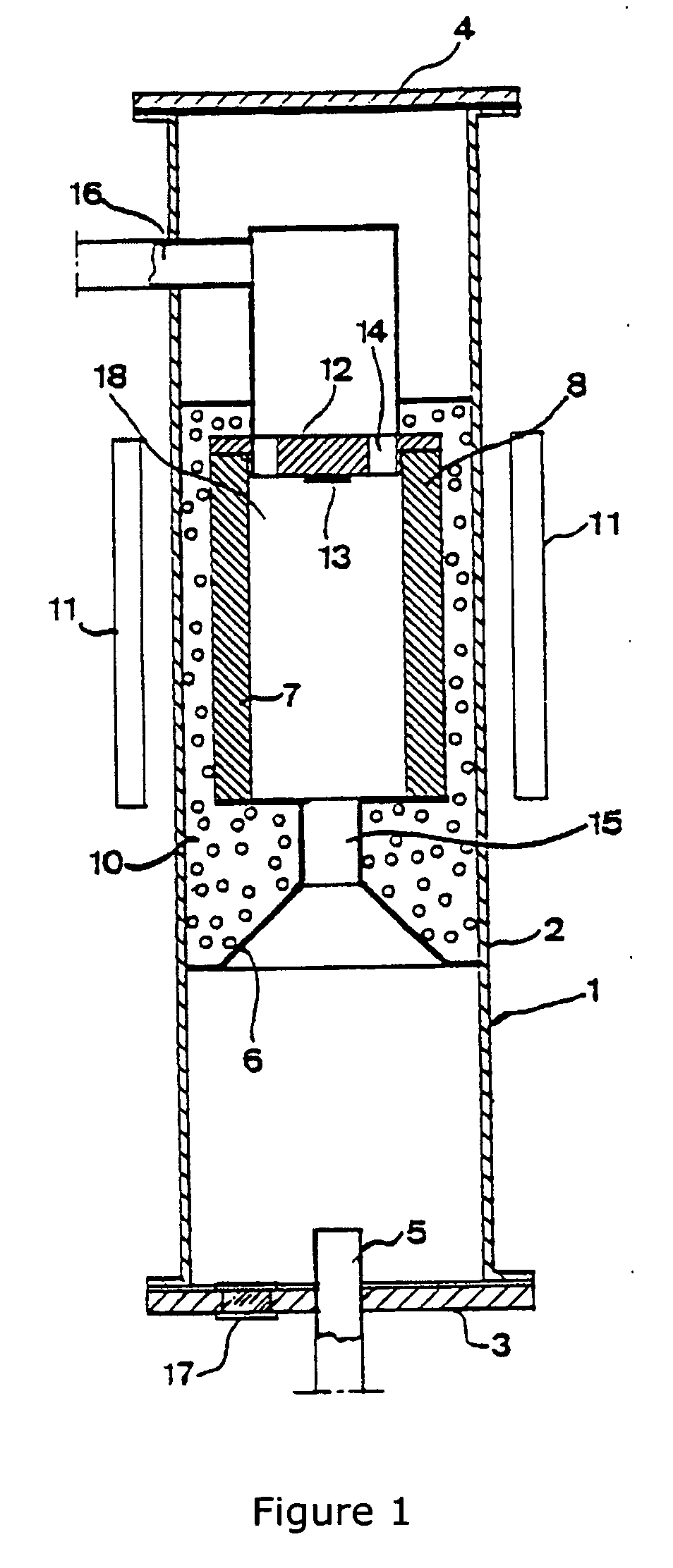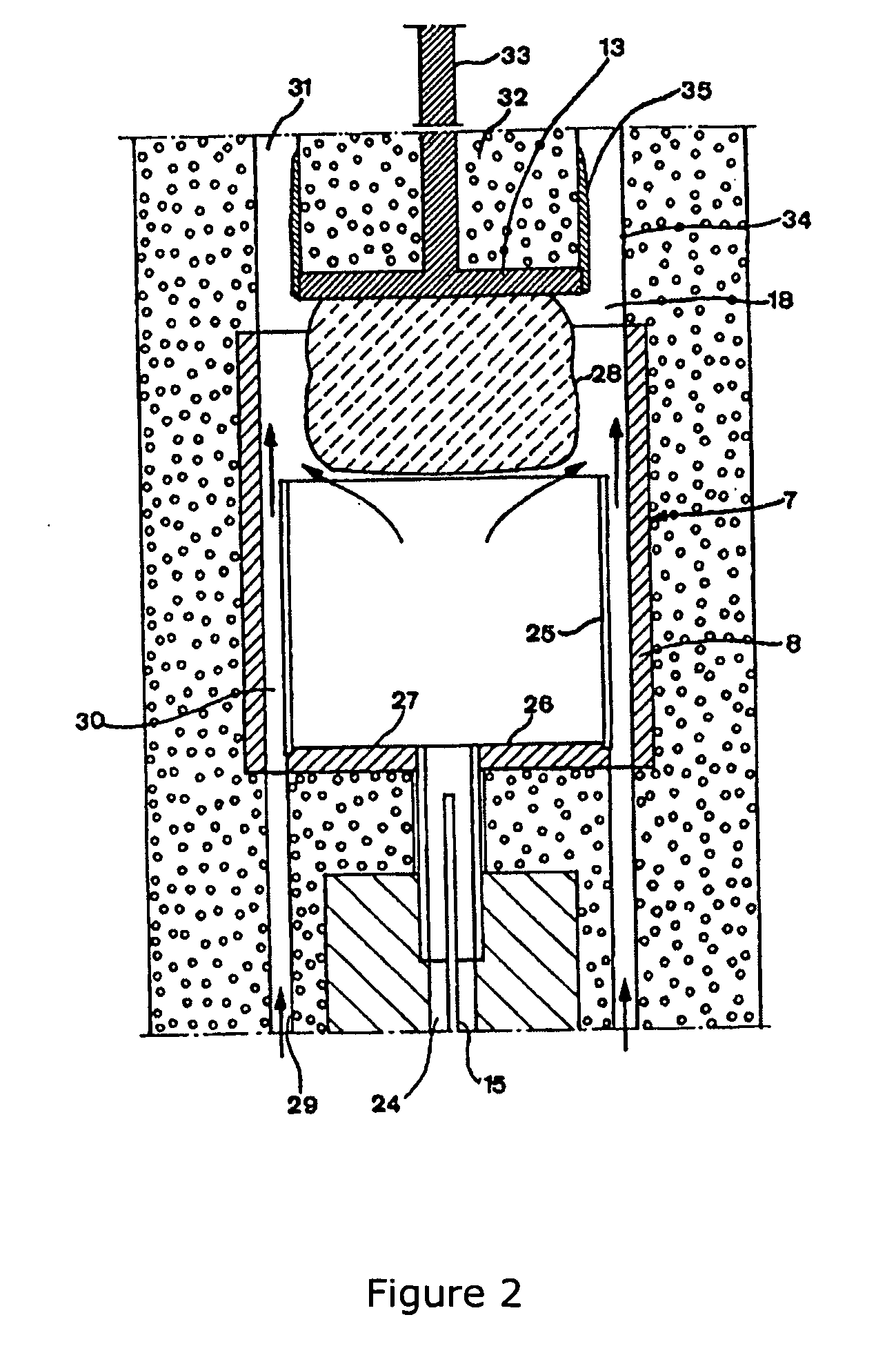Device and method to producing single crystals by vapour deposition
a technology of vapour deposition and crystal growth, which is applied in the direction of crystal growth process, polycrystalline material growth, condensed vapor growth, etc., can solve the problems of limiting the duration of a continuous crystal growth process and thus the crystal length, the need to control the sublimation rate change, and the drift of sublimed species, so as to reduce the concentration of unwanted metallic impurities, slow down or eliminate the formation
- Summary
- Abstract
- Description
- Claims
- Application Information
AI Technical Summary
Benefits of technology
Problems solved by technology
Method used
Image
Examples
Embodiment Construction
[0027]FIG. 3 schematically shows an improved device comprising a growth chamber of a HTCVD system based on the concepts described in the U.S. Pat. Nos. 5,704,985, 6,039,812 and 6,048,398. This device will also be described here as preferred embodiments of the device of the invention may have a similar principle construction as in the above mentioned documents but differ in the particular features and improvements described herein. The device ofFIG. 3 is suited to grow single crystals of SiC or of a group-III nitride. Some parts are for the sake of simplicity schematized and it is obvious to a person skilled in the technical field that the device also comprises elements such as mass flow controllers, valves, pumps, control electronics, purifiers, a scrubbing system and other elements, as is common practice in CVD systems.
[0028]The high temperature chemical vapor deposition device comprises a casing 1 constituted, for example, of a single wall quartz tube 2 tightly mounted between a l...
PUM
| Property | Measurement | Unit |
|---|---|---|
| deposition | aaaaa | aaaaa |
| temperature | aaaaa | aaaaa |
| temperatures | aaaaa | aaaaa |
Abstract
Description
Claims
Application Information
 Login to View More
Login to View More - R&D
- Intellectual Property
- Life Sciences
- Materials
- Tech Scout
- Unparalleled Data Quality
- Higher Quality Content
- 60% Fewer Hallucinations
Browse by: Latest US Patents, China's latest patents, Technical Efficacy Thesaurus, Application Domain, Technology Topic, Popular Technical Reports.
© 2025 PatSnap. All rights reserved.Legal|Privacy policy|Modern Slavery Act Transparency Statement|Sitemap|About US| Contact US: help@patsnap.com



